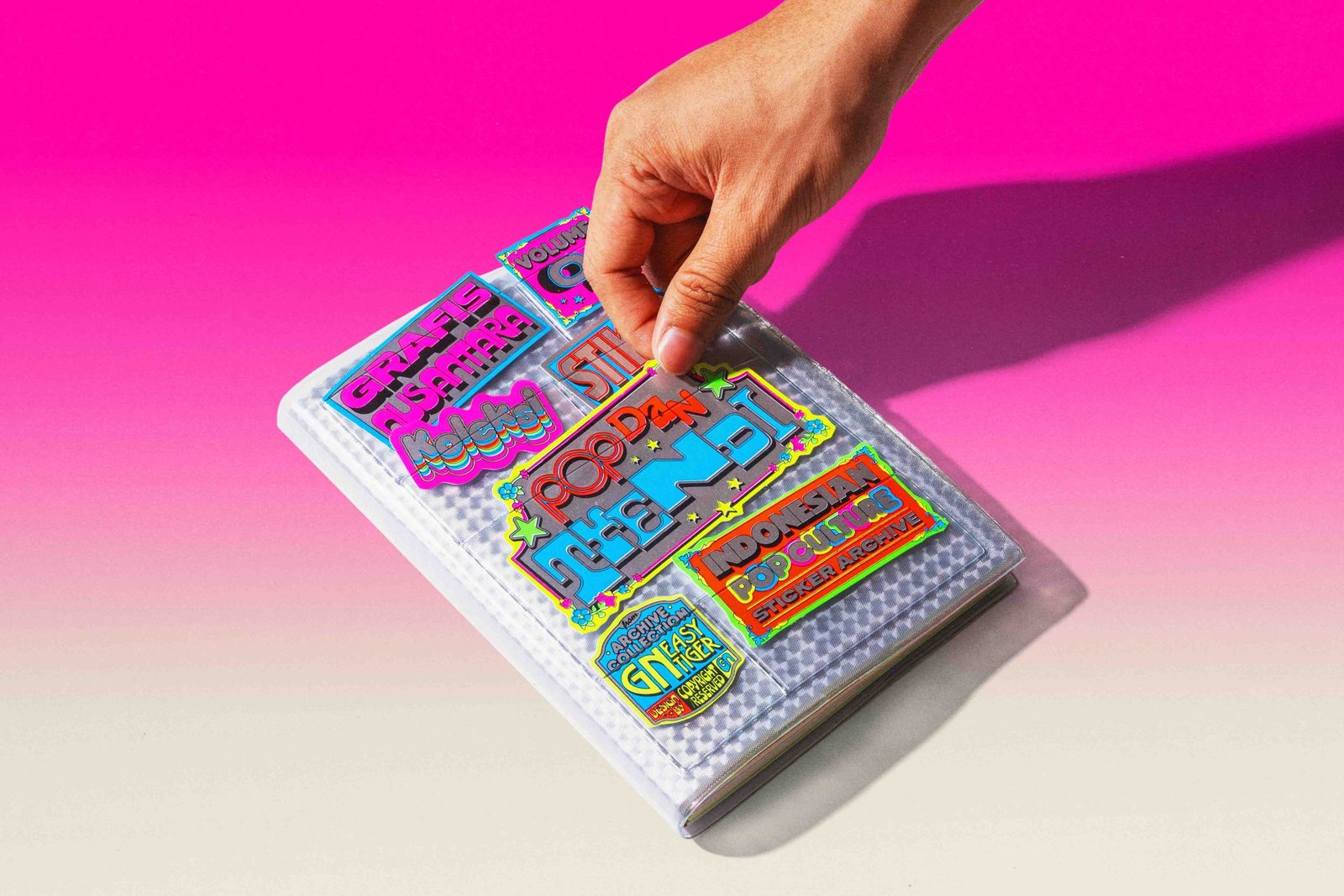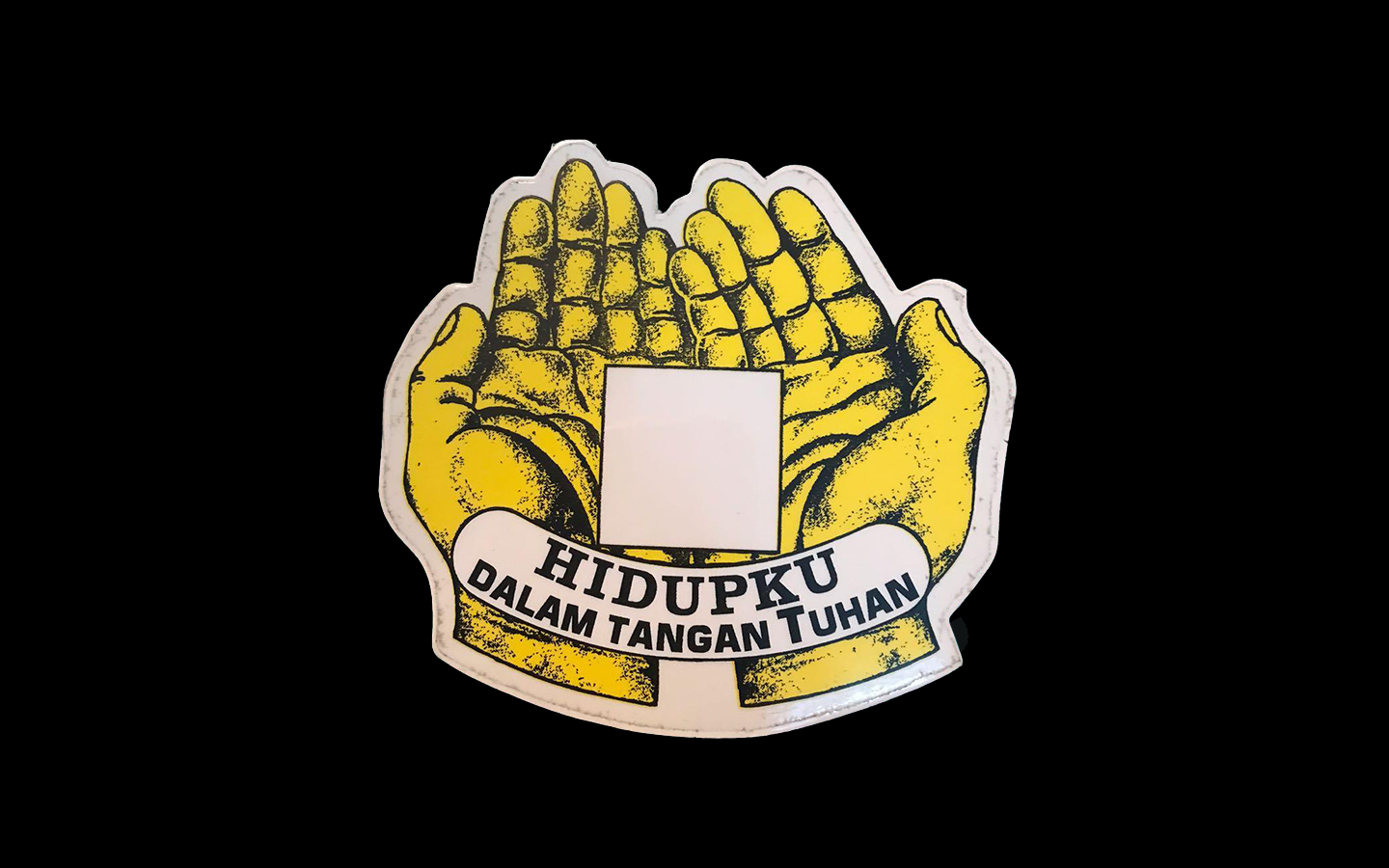
While numbers in brand names are commonly used around the world for practical reasons, such as denoting product versions or market segments, their presence in Indonesian cigarette brands carries far more cultural weight. In this context, numbers are not just markers; they are vessels of belief, symbolism, and intention.
Branding in Indonesia’s kretek (clove cigarette) industry goes beyond conventional marketing techniques or design. The majority of these brands are dictated by myths, religion, and rooted cultural practices. Some of the most recognisable kretek names are rooted in narratives where mysticism and commerce intertwine.
This article draws heavily from Rudy Badil’s Kretek Jawa [1], a book that gives details to the cultural, spiritual, and business dimensions of Indonesia’s kretek. It is one of several works we found particularly compelling, and we recommend it as companion reading to our third book.
The Sacred Practice of Numerology
A study published in Humanities and Social Sciences Communications in 2024 [2] demonstrates that numerous businesses in India and Southeast Asia often use numerology when making decisions. This can shape everything from the names of products to how a company plans its future, with names chosen to match lucky numbers believed to bring success or good fortune.
In Indonesia, especially for Javanese and Chinese-Indonesian, numbers such as 3 and 9 appear frequently in cigarette branding and carry cultural symbolism. The number 3 is most often associated with balance and harmony, like in the Javanese aji tiga, or “the three treasures.” The number 9, by contrast, is more symbolic. Being the biggest single-digit number, it is widely seen to represent wholeness, cosmic integration, or spiritual completion.
Consider Dji Sam Soe, one of Indonesia’s oldest and most well-known kretek brands. The name is pronounced “2-3-4” in the Hokkien dialect. At first glance, this might seem like a random choice. In reality, it is quite deliberate. When added together, the numbers 2, 3, and 4 equal 9.
The number 9 is most prominently woven into Sampoerna, the corporate entity that owns Dji Sam Soe. The name “Sampoerna” itself contains nine letters. Its emblem is a nine-pointed star. The company’s founder, Liem Seeng Tee, was reputed to seek counsel from spiritual authorities, and, as local legend has it, he deliberately structured the brand as per numerological principles. Even the location where the factory is situated is reputed to have been selected on grounds of symbolism.
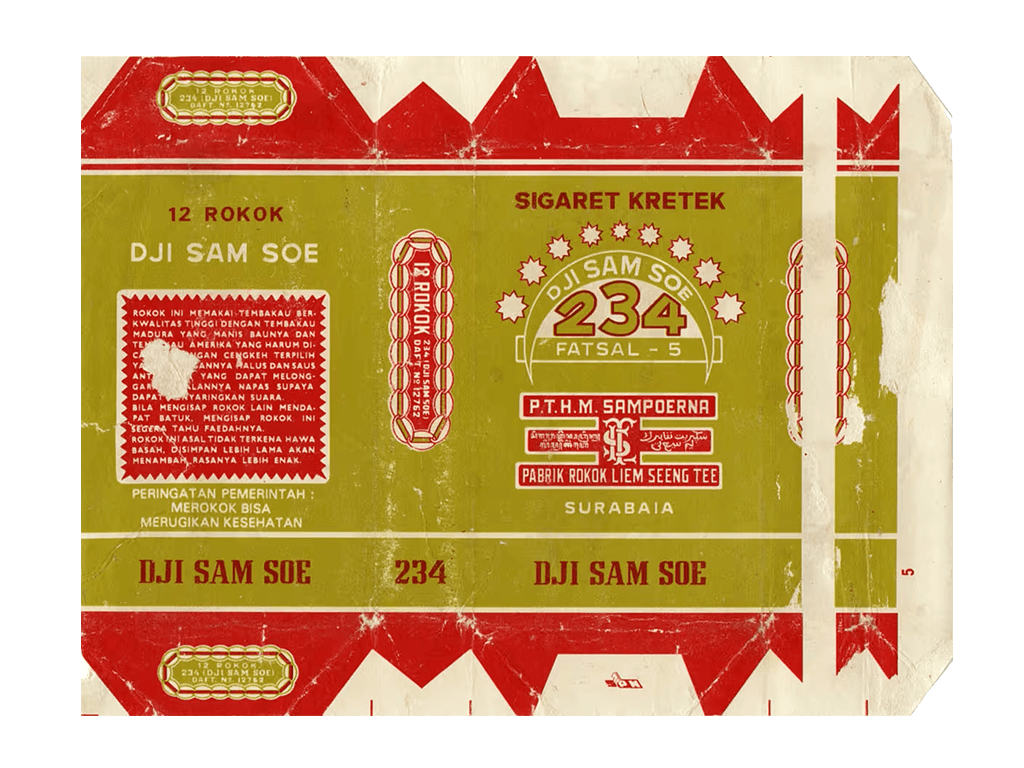
Dji Sam Soe kretek packaging.
Other examples are Bal Tiga (Three Balls), which both symbolically and visually reasserts the triad motif, a ubiquitous numerological emblem in Chinese cosmology for balance and harmony. Triads, or three things combined (heaven, earth, and human beings), are said to promise success and conformation with the universe’s forces.

Bal Tiga kretek label.
Bentoel and the Dream on the Mountain
One of the most compelling origin stories in Indonesian cigarette lore comes from the Bentoel brand. In the 1930s, Ong Hok Liong, a struggling cigarette producer in Malang, sought spiritual intervention for his failing business. He and his wife visited the grave of an honourable Javanese sage, Eyang Djugo, at the foot of Mount Kawi.
There are two versions of what happened next. In one of these, Ong dreamed of seeing a man selling “bentul” (a type of bronze-colored steamed snack). In another, as described by his daughter, Ong also experienced a vision during a session of meditation (semadi) in which he saw crowds of bentul sellers passing him by. Admitting this to be a supernatural indication, Ong renamed his business Bentoel, a phonetic rendering of the snack’s name, and used its picture as his brand logo. Soon after, the company began to expand.
What would be seen as bizarre or capricious elsewhere in the business world is, in Indonesia, an intimidating mix of branding, spirituality, and intuition.
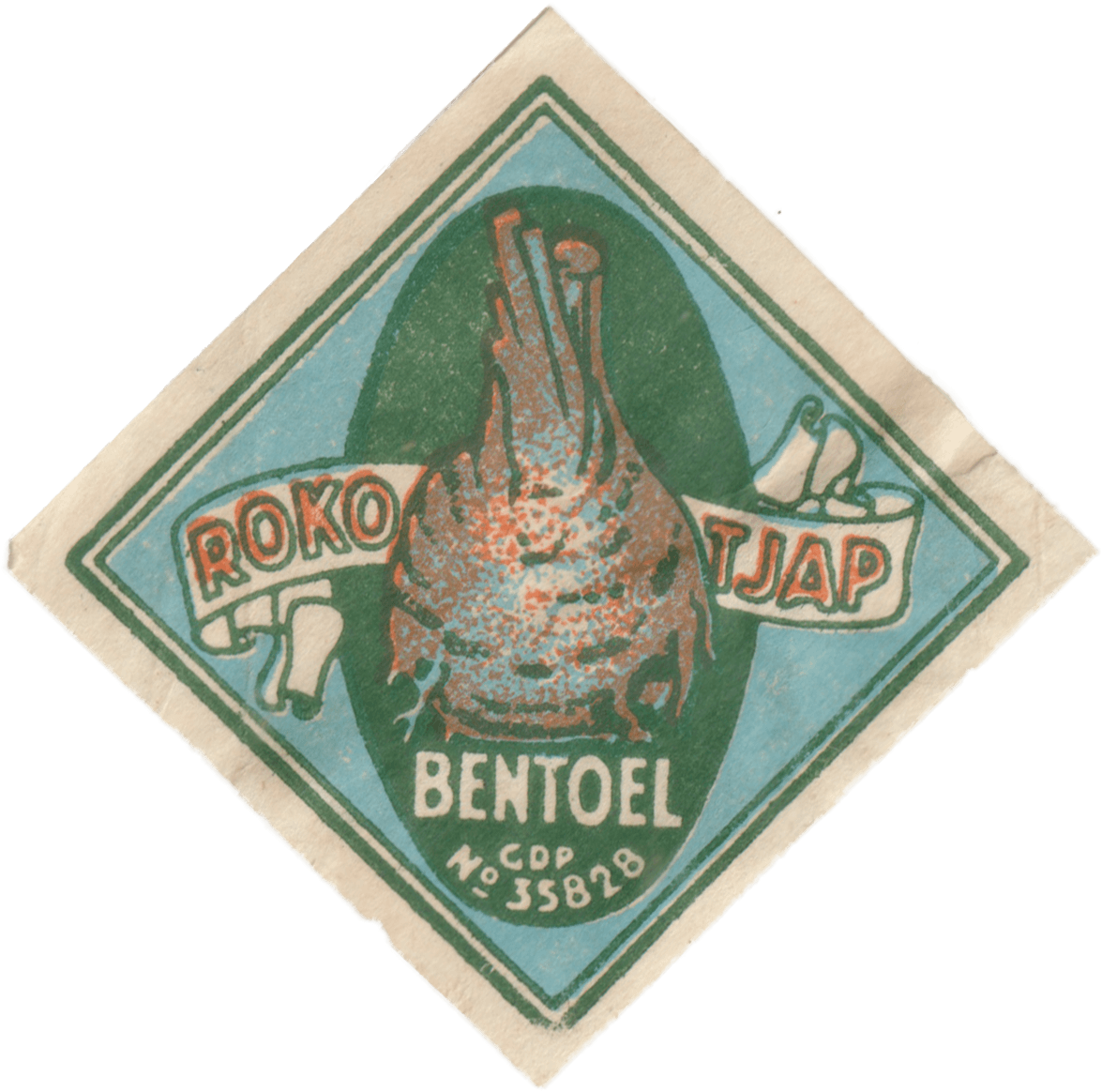
Rokok Tjap Bentoel label. Collection of Grafis Nusantara.
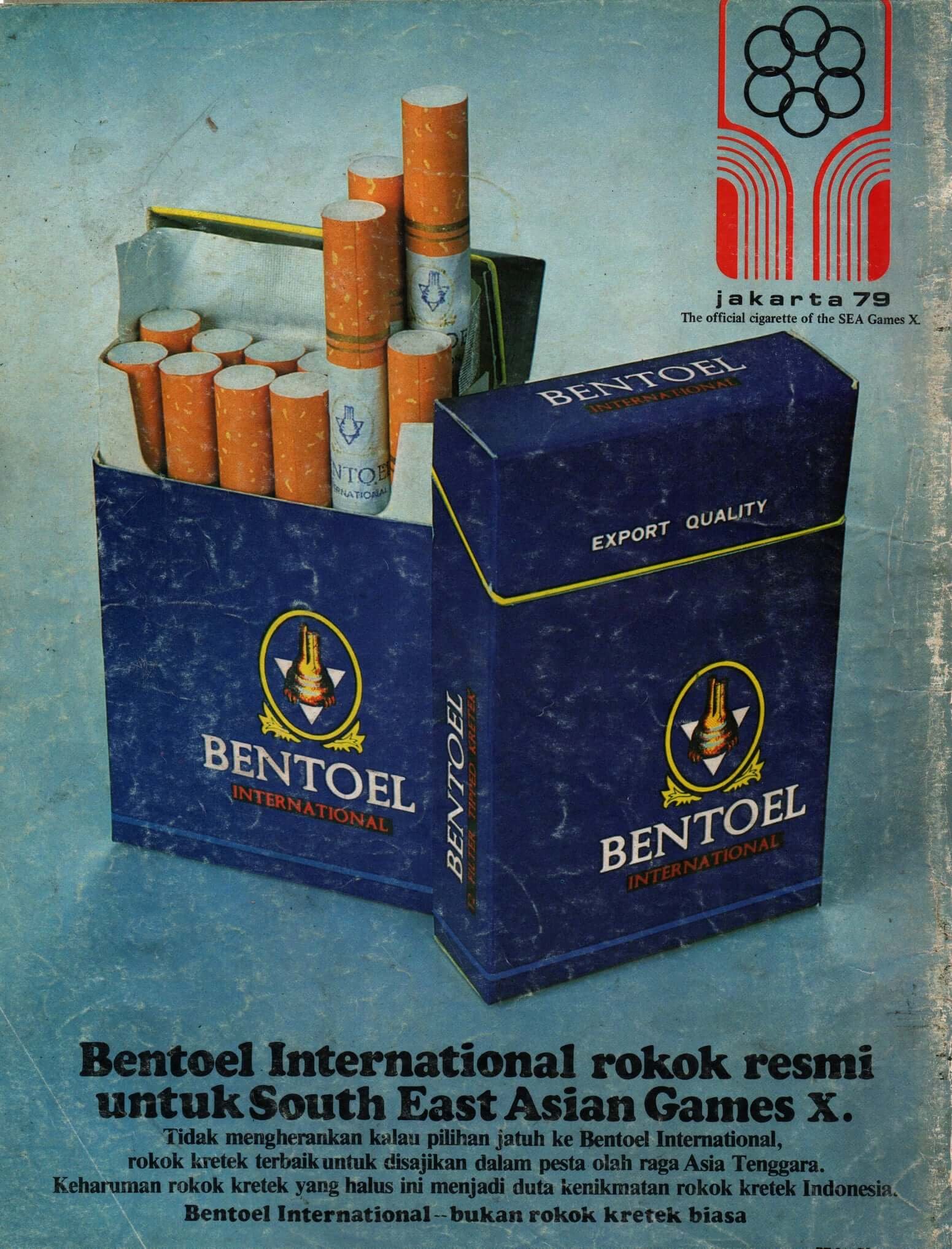
Bentoel advertising, 1979.
Gudang Garam: A Warehouse Born of a Dream
Another giant player in Indonesia’s tobacco world, Gudang Garam (“Salt Warehouse” in Indonesian), also originated from a dream. In 1958, its constructor, Surya Wonowijoyo (Tjoa Ing Hwie), supposedly dreamed up an old salt warehouse near where he was working. Inspired by the dream, he borrowed the idea to employ it as his company’s name and logo.
A few versions of the story go that the logo, five warehouse buildings with a railroad track coming in front, was sketched out by one local artist who was given it while in a trance-like state. The sketch was then referred to and passed by a spiritual counselor. With such mystical beginnings, the brand was renowned overnight, among the most well-known brands of Indonesian cigarettes.
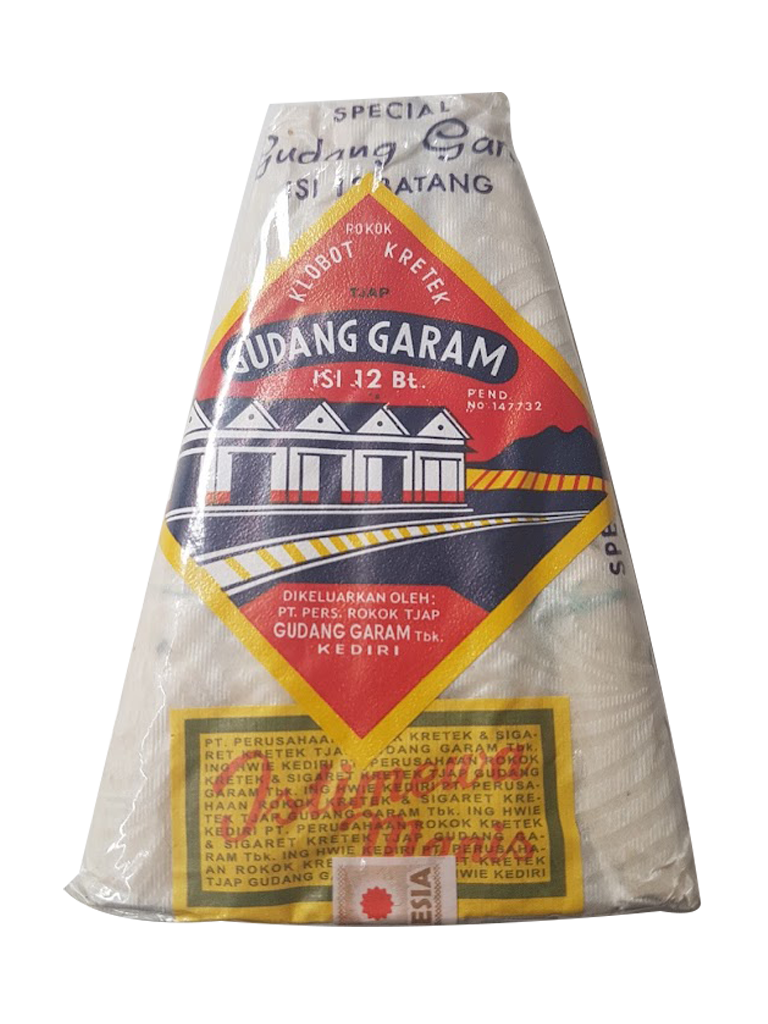
Gudang Garam klobot kretek packaging.

Vectorised Gudang Garam logo for present products.
When Branding Turns into Cultural Heritage
These brand myths are not simply origin stories. They are a quintessentially Indonesian approach to business, where personal belief, cultural meaning, and spiritual consciousness intersect. Branding in this case is more than an exercise in marketing—branding is an exercise aimed to create harmony with the universe.
The other brands follow the same trend. Take Wismilak, for example, whose brand name plays with the English idiom “Wish Me Luck” that combines Western modes of expresing auspiciousness with local spiritual customs. Its packaging features Javanese script that reads Nyuwun Berkah (“asking for blessings”), reinforcing the connection between good fortune and spirituality.

Wismilak logo.

Wismilak logo on a tin packaging.
Why It Matters
In a global branding landscape increasingly shaped by data analytics and market-tested aesthetics, Indonesian cigarette brands offer a strikingly different approach. Rather than relying solely on metrics or trends, many of these brands are rooted in oral traditions, dreams, and personal mythology. As a result, graphic design in Indonesia often takes on a storytelling quality, with visual language enriched by layers of history, symbolism, and cosmology. The presence of numerology in names, logos, and packaging reflects this narrative instinct.
This is not to romanticise the kretek industry, which raises its own ethical concerns, but rather to observe how, even within a controversial sector, branding can serve as a mirror of culture. In Indonesia—a country where Islamic, Chinese, Javanese, Hindu, and colonial legacies intersect—the stories behind cigarette packaging reveal how belief systems continue to shape everyday objects. Instead of adhering to a single visual tradition, Indonesian design tends to weave together diverse influences to create something uniquely local.
For many of these brands, design choices are not merely functional or commercial. They are treated as ritual acts. From the number of points on a star to the symbolic layout of a factory site, these decisions reflect a desire for spiritual alignment. This suggests that, in the Indonesian context, graphic design can operate as a modern extension of traditional ritual practices.
Ultimately, this phenomenon challenges the universalist frameworks that often underpin global branding and design education. It shows that effective design in Indonesia does not necessarily align with Western notions of rational branding or minimalist aesthetics. Instead, it is guided by cultural logic, symbolism, and continuity, sometimes favouring ancestral knowledge over contemporary trends.
Explore the collection of Indonesian kretek labels in Grafis Nusantara’s archive here, or grab your copy of Grafis Nusantara Vol. 3: Seri Label Kretek here.
–
Footnotes
[1] Badil, R. (2020). Kretek Jawa. Jakarta: PT Elex Media Komputindo.
[2] Mahadevan, K. (2024). Exploring Numerology for Businesses: A Bold Leap of Faith. Humanities and Social Sciences Communications, 11(1), 1-10.

